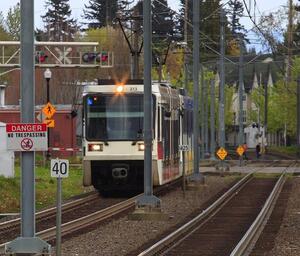Blog Information
- Posted By : emtrac systems
- Posted On : Nov 28, 2022
- Views : 154
- Category : General
- Description : Transit Signal Priority (TSP) tools adjust traffic signal timing or phasing when transit vehicles are either late or arriving in transit. The Transit Signal Priority application helps to improve reliability and travel time, street time with long signal cycles, and distances between signals.
- Location : 1201 W Randolph St, Chicago, IL, USA
Overview
Transit Signal Priority (TSP) tools adjust traffic signal timing or phasing when transit vehicles are either late or arriving in transit. The Transit Signal Priority application helps to improve reliability and travel time, street time with long signal cycles, and distances between signals. In urban contexts, TSP benefits are significantly amplified when implemented alongside other strategies like dedicated transit lanes. The most common tools are detailed on the facing page.
The planned work:
- Pausing a green light for some seconds for an approaching transit vehicle
- Limiting a red light for a transit vehicle waiting at the light
- Adjusting when a green phase for traffic signal time it to the arrival of a transit vehicle
Other workable:
- Pause the traffic with a red light, so a bus pulled off at a stop or station can re-enter the lane more easily.
- Working with particular bus-only signal phases that can help emergency vehicles or buses make their way around traffic stopped at a red light.
Traffic Signal Priority strategy:
- The priority is to focus on transit routes that have delays with unexpected travel time.
- Waiting at traffic signals is also one of the primary sources of delay for transit; therefore, heavy traffic conditions are kept in mind.
- The other factor includes long distances between signals and long signal cycles.
- Effectively using passive Traffic Signal Priority as block lengths are short and transit frequencies are high. These are well-suited in downtime environments.
- Focus on being given on passages that have bus rapid transit running within them Because TSP systems interrupt a traffic signal's standard signal cycle, agencies must balance decisions about how frequently and under what conditions to use it.
While it may help public transit run faster or closer to schedule, it may also cause delays for other traffic. A traffic signal often requires multiple cycles to return to its standard plan; if TSP is activated too frequently or in too short of succession, it can cause delays for other traffic. It may even prevent the signal cycle from being restored to its standard plan. The strategy improves transit travel time and reliability by reducing the time transit vehicles spend waiting at red lights.
Some of the requirements involved in the planning are:
A proper collective and well-planned system configuration guided by transit and traffic signal agencies Well-framed policies on the operating rules for TSP, which includes details of equipment, and its implementation to ensure that the system is compatible across jurisdictions Checking geometrical and operational factors, including traffic volume and capacity, signal spacing, and signal cycle length.
Get in Touch:
location: Manufactured By STC, Inc. 1201 W. Randolph St, McLeansboro, IL 62859
phone: Richard D’Alessandro: (214) 607–0100
Fax: (214) 607–0105
Email: info@emtracsystems.com
